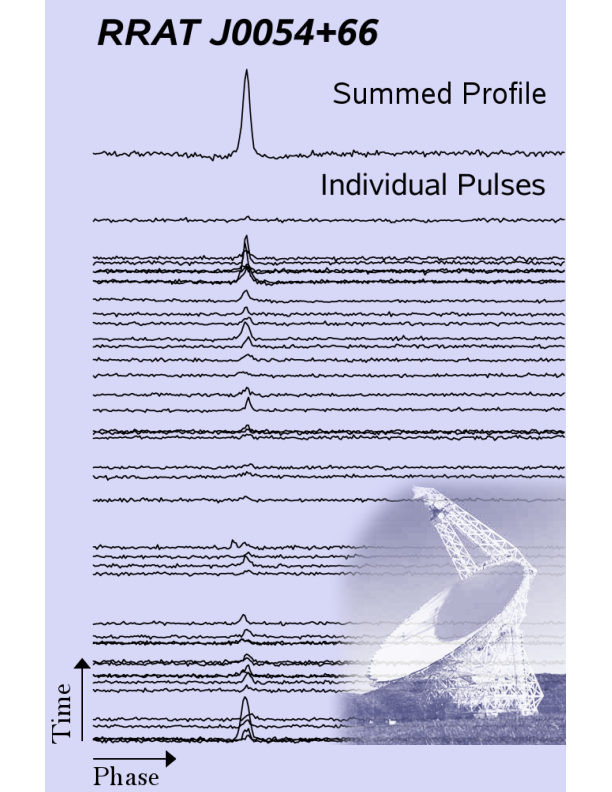Daily Image
25-11-2009Exploring the Nature of the Rotating Radio Transients
| Submitter: | Patrick Lazarus and Jason Hessels |
| Description: | The "Rotating Radio Transients" (RRATs) are a recently identified population of neutron stars that are visible in radio for only a second or less per day. The rare pulses that the RRATs emit distinguish them from canonical radio pulsars, which generally have more steady emission. While it seems likely that there is some link between "normal" radio pulsars and RRATs, this link is still poorly understood because the number of known RRATs is still only a couple dozen compared with the 2000 known radio pulsars. Despite the small number of known RRATs, the observational bias against detecting them means that their true population may be similar in size to that of normal radio pulsars. As an ASTRON summer student in 2009, Patrick Lazarus made a careful study of two newly discovered pulsars with properties similar to the RRATs. Patrick constructed a phase-coherent timing model for both sources, which fits measured pulse arrival times to take into account every single rotation the neutron stars have made over the course of roughly a year. This model gives precise rotational parameters and slow down, as well as a sub-arcsecond position. These can be used to infer magnetic field strength and age. The figure shows a 30-minute observation of RRAT J0054+66 with the Green Bank Telescope. The data have been cut into pieces equal to the pulse period and these have been stacked vertically. A pulse is detected in only ~2.5% of the rotations; rotations where no pulse was detected are left blank. Half of the total rotational phase is plotted in each case and the sum of all the detected pulses in this observation is plotted at the top. Interestingly, the inferred position of this RRAT is coincident with an optical source. We are still investigating whether this RRAT might be in a long-period binary system. |
| Copyright: | P. Lazarus |
| Tweet |  |
